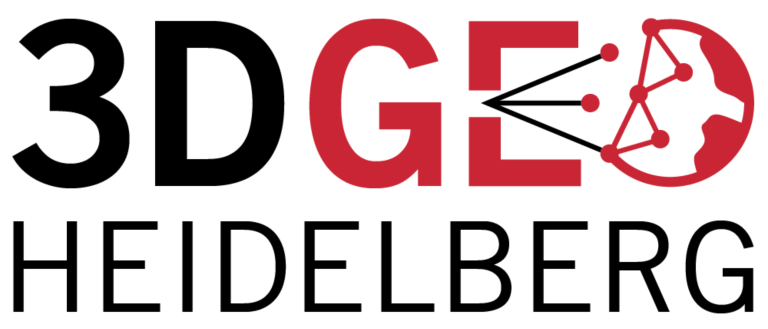GIScience News Blog
-
AGIT30 was ohsome (and awesome)
Members of the HeiGIT team were presenting parts of our work at this years AGIT/GI_Forum conference in Salzburg, Austria (as already announced in a previous blogpost). Julian Bruns was presenting the results of a joint work with the KIT and his old employer, the FZI, which is published in the GI-Forum journal (English conference running in parallel to the…
-
Follow-up to study with mobile low-cost 3D camera crop height measurements
The study “Mobile low-cost 3D camera maize crop height measurements under field conditions” (see the respective blog entry) is now available also as print version: The updated citation is: Hämmerle, M. & Höfle, B. (2018): Mobile low-cost 3D camera maize crop height measurements under field conditions. Precision Agriculture 19(4), pp. 630-647. doi: 10.1007/s11119-017-9544-3.
-
Continued capturing of an active rock glacier in 3D
For the fourth consecutive year, the 3DGeo team acquired the rock glacier Äußeres Hochebenkar in the Austrian Ötztal by terrestrial laser scanning. This adds another point cloud to the multitemporal dataset to observe how the active rock glacier changes over the years. In an elevation over 2600 m a.s.l., the complex terrain on and around…
-
A new infrastructure for exploring and analyzing OpenStreetMap
Ever wondered how you can generate/use some meta-information about OpenStreetMap for your project? Are you interested in visualizing different aspects of OpenStreetMap data? In the article below, we present a server infrastructure to collect and process data about different aspects of OpenStreetMap. The resulting data are offered publicly in a common container format, which fosters…
-
Validation of fracture data recognition in rock masses by automated plane detection in 3D point clouds
Digital outcrop models provide a powerful data basis to obtain orientation information on rock masses. Robust and transferrable automatic methods are required to process and analyze these data, as outcrops and hence acquired 3D point clouds are influenced by varying conditions depending e.g., on the site, atmospheric conditions and other factors. A crucial aspect in…
-
1 Million ways to download OpenStreetMap data workshop
OpenStreetMap has become a huge source for any kind of geographic information. In OpenStreetMap you now find not only street information, but also information related to buildings, shops, sights and in Heidelberg even to individual trees. Furthermore, OpenStreetMap data is open data – everyone is free to edit and to download the data to create own…
-
Talk on methods and applications for large geospatial point clouds
On Wednesday, Roderik Lindenbergh from TU Delft (NL) gave an exciting talk on robust geometry extraction in large spatial point clouds in the frame of the IWR colloquium at the Interdisciplinary Center for Scientific Computing. With focus on robust and novel methods of geoinformation extraction from these special datasets, the audience was taken on a…
-
Introducing the Critical Numbers Tool for the HOT Tasking Manager
We would like to introduce our new little analysis tool Critical Numbers for projects of the HOT Tasking Manager. (You can find this blogpost and the code for the tool at our GitHub repository.) The Critical Numbers webapp is an easy way to visualize how much of a project is mapped and validated – results…
-
Meet us at AGIT30
Meet us in Salzburg at the AGIT30 conference and get to know the ohsome platform, that has been introduced recently! Our colleague Fabian Kowatsch will give a talk on Thursday, July 5th: M. Auer, M. Eckle, S. Fendrich, F. Kowatsch, L. Loos, S. Marx, M. Raifert, M. Schott, R. Troilo, A. Zipf. Ohsome – eine…
-
IWR Colloquium on Robust Geometry Extraction in Large Spatial Point Clouds (Prof. Roderik Lindenbergh)
Everyone interested is cordially invited to the talk of Prof. Roderik Lindenbergh (TU Delft, NL) on Robust geometry extraction in large spatial point clouds in the frame of the IWR Colloquium at the Interdisciplinary Center for Scientific Computing. When: Wednesday, 27th June 2018, 14:15 Where: Conference Room (5th Floor), Mathematikon, INF 205 Before the talk,…
3D 3DGEO Big Spatial Data CAP4Access Citizen Science Climate Change Conference crisis mapping Crowdsourcing data quality deep learning disaster DisasterMapping GIScience heigit HELIOS HOT humanitarian humanitarian mapping Humanitarian OpenStreetMap team intrinsic quality analysis landuse laser scanning Lidar machine-learning Mapathon MapSwipe Missing Maps MissingMaps ohsome ohsome example Open data openrouteservice OpenStreetMap OSM OSM History Analytics Quality quality analysis remote sensing routing social media spatial analysis Teaching VGI Workshop


